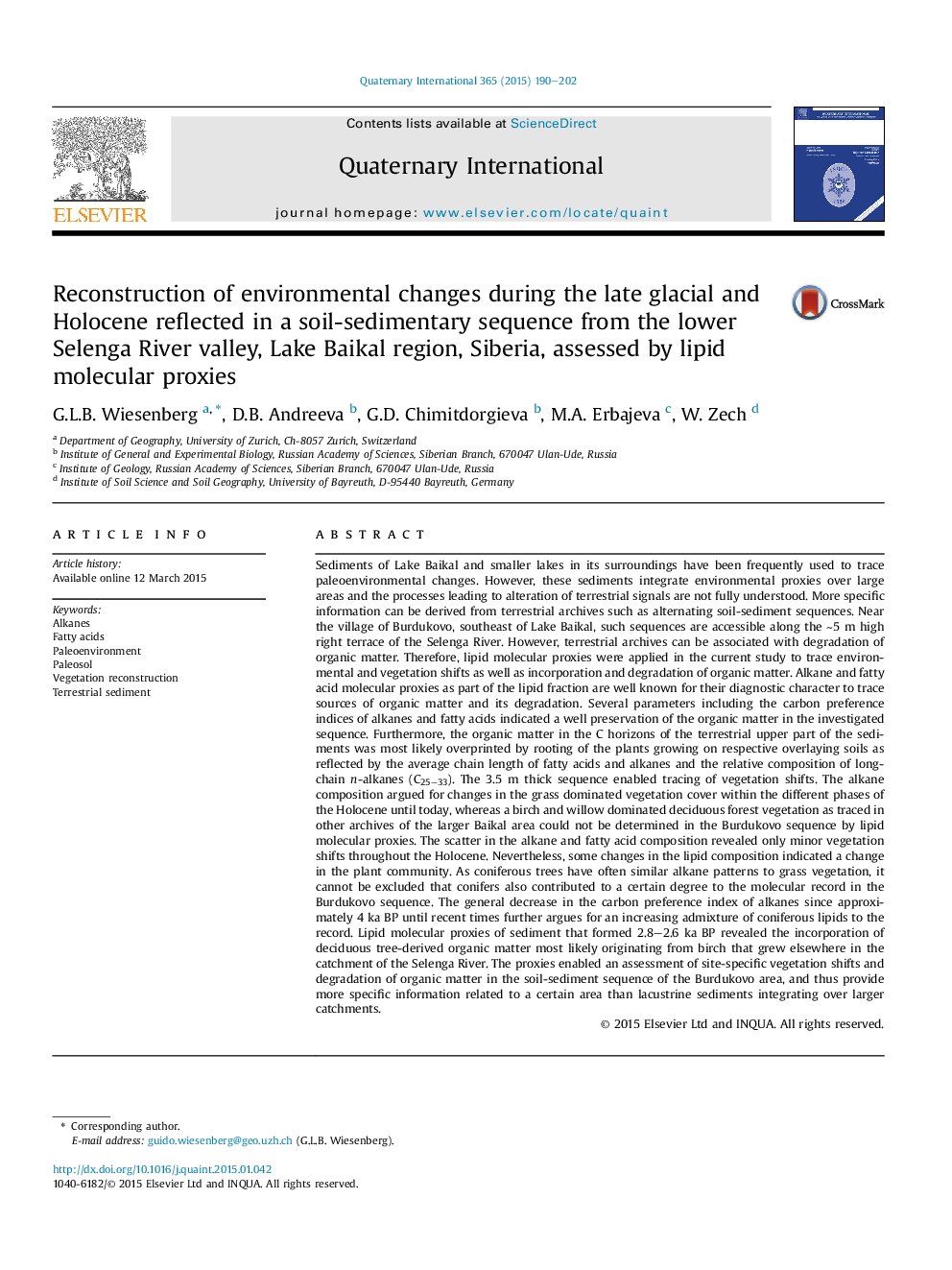| Article ID | Journal | Published Year | Pages | File Type |
|---|---|---|---|---|
| 1040912 | Quaternary International | 2015 | 13 Pages |
Sediments of Lake Baikal and smaller lakes in its surroundings have been frequently used to trace paleoenvironmental changes. However, these sediments integrate environmental proxies over large areas and the processes leading to alteration of terrestrial signals are not fully understood. More specific information can be derived from terrestrial archives such as alternating soil-sediment sequences. Near the village of Burdukovo, southeast of Lake Baikal, such sequences are accessible along the ∼5 m high right terrace of the Selenga River. However, terrestrial archives can be associated with degradation of organic matter. Therefore, lipid molecular proxies were applied in the current study to trace environmental and vegetation shifts as well as incorporation and degradation of organic matter. Alkane and fatty acid molecular proxies as part of the lipid fraction are well known for their diagnostic character to trace sources of organic matter and its degradation. Several parameters including the carbon preference indices of alkanes and fatty acids indicated a well preservation of the organic matter in the investigated sequence. Furthermore, the organic matter in the C horizons of the terrestrial upper part of the sediments was most likely overprinted by rooting of the plants growing on respective overlaying soils as reflected by the average chain length of fatty acids and alkanes and the relative composition of long-chain n-alkanes (C25–33). The 3.5 m thick sequence enabled tracing of vegetation shifts. The alkane composition argued for changes in the grass dominated vegetation cover within the different phases of the Holocene until today, whereas a birch and willow dominated deciduous forest vegetation as traced in other archives of the larger Baikal area could not be determined in the Burdukovo sequence by lipid molecular proxies. The scatter in the alkane and fatty acid composition revealed only minor vegetation shifts throughout the Holocene. Nevertheless, some changes in the lipid composition indicated a change in the plant community. As coniferous trees have often similar alkane patterns to grass vegetation, it cannot be excluded that conifers also contributed to a certain degree to the molecular record in the Burdukovo sequence. The general decrease in the carbon preference index of alkanes since approximately 4 ka BP until recent times further argues for an increasing admixture of coniferous lipids to the record. Lipid molecular proxies of sediment that formed 2.8–2.6 ka BP revealed the incorporation of deciduous tree-derived organic matter most likely originating from birch that grew elsewhere in the catchment of the Selenga River. The proxies enabled an assessment of site-specific vegetation shifts and degradation of organic matter in the soil-sediment sequence of the Burdukovo area, and thus provide more specific information related to a certain area than lacustrine sediments integrating over larger catchments.
